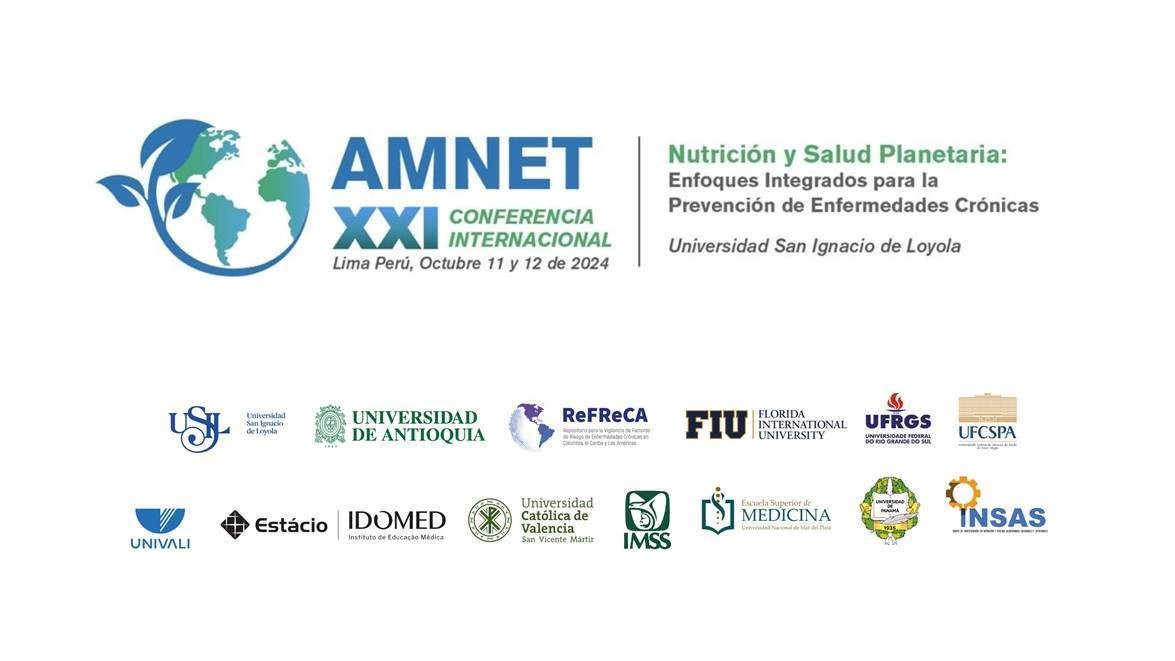Panel de expertos (virtual): Alimentos ultraprocesados y los retos para la reducción y control de las Enfermedades Crónicas
Start Date
11-10-2024 11:00 AM
End Date
11-10-2024 11:50 AM
Description
Alimentos ultraprocesados
Desafíos y oportunidades para disminuir el consumo de alimentos ultraprocesados: el caso chileno La ponencia presentará el escenario de consumo de estos productos en Chile y su impacto en la salud pública. Se discutirán las principales estrategias regulatorias adoptadas, destacando la Ley de Etiquetado Chilena y la clasificación NOVA, como marcos clave para la identificación de alimentos ultraprocesados. Además, se discutirán oportunidades para fortalecer las políticas alimentarias y avanzar hacia una reducción efectiva de su consumo, promoviendo entornos alimentarios más saludables. \
Comparing the Canadian front-of-pack labeling regulations with other mandatory approaches in the Americas and their ability to identify ultra-processed products
Background: Front-of-pack labeling (FOPL) has been implemented in several countries in the Americas, with Chile being the first to introduce a mandatory ‘high in’ warning FOPL in 2016. The Pan American Health Organization (PAHO) food classification criteria, considered a best practice for FOPL regulations, has been adopted by Mexico, Argentina, and Colombia. Canada’s FOPL regulations were recently approved and will take effect in January 2026, but it is unknown how these regulations compare to FOPL regulations that have already been implemented in other parts of the region.
Objectives: To compare the Canadian criteria for FOPL regulations with other FOPL criteria implemented in the Americas, and to determine their ability to identify ultra-processed products (UPPs).
Methods: Packaged foods and beverages (n=17,094) from the University of Toronto’s Food Label Information and Price (FLIP) 2017 database were analyzed using three FOPL criteria (Canadian, Chilean and PAHO criteria) and the NOVA classification system. The proportions of products that would be subject to displaying a ‘high in/excess’ FOPL and UPPs that would not be subject to FOPL regulations were examined under each criterion. Agreement patterns were modeled using a nested sequence of hierarchical Poisson log-linear models. The Wald statistics for homogeneity were used to test whether proportional distributions differ significantly.
Results: Under the Canadian, Chilean and PAHO criteria, 54.4%, 68.4%, and 80.2% of packaged products would be required to display a ‘high in/excess’ FOPL, respectively. Disagreements between the Chilean and the Canadian criteria with PAHO’s were significant, but the greatest disagreement was between the Canadian and PAHO criteria. According to the Canadian, Chilean, and PAHO criteria, 33.4%, 18.4%, 2.3% of UPPs would not be subject to FOPL regulations, respectively.
Conclusions: A significant proportion of products that should be subject to FOPL regulations according to the PAHO criteria would not be regulated under Chilean and Canadian criteria, resulting in high proportions of UPPs that would not be subject to FOPL regulations. The Canadian FOPL criteria are the most lenient, with the highest proportion of UPPs that would not display a FOPL. Results can inform improvements for FOPL regulations in Canada, Chile and other countries.
Panel de expertos (virtual): Alimentos ultraprocesados y los retos para la reducción y control de las Enfermedades Crónicas
Alimentos ultraprocesados
Desafíos y oportunidades para disminuir el consumo de alimentos ultraprocesados: el caso chileno La ponencia presentará el escenario de consumo de estos productos en Chile y su impacto en la salud pública. Se discutirán las principales estrategias regulatorias adoptadas, destacando la Ley de Etiquetado Chilena y la clasificación NOVA, como marcos clave para la identificación de alimentos ultraprocesados. Además, se discutirán oportunidades para fortalecer las políticas alimentarias y avanzar hacia una reducción efectiva de su consumo, promoviendo entornos alimentarios más saludables. \
Comparing the Canadian front-of-pack labeling regulations with other mandatory approaches in the Americas and their ability to identify ultra-processed products
Background: Front-of-pack labeling (FOPL) has been implemented in several countries in the Americas, with Chile being the first to introduce a mandatory ‘high in’ warning FOPL in 2016. The Pan American Health Organization (PAHO) food classification criteria, considered a best practice for FOPL regulations, has been adopted by Mexico, Argentina, and Colombia. Canada’s FOPL regulations were recently approved and will take effect in January 2026, but it is unknown how these regulations compare to FOPL regulations that have already been implemented in other parts of the region.
Objectives: To compare the Canadian criteria for FOPL regulations with other FOPL criteria implemented in the Americas, and to determine their ability to identify ultra-processed products (UPPs).
Methods: Packaged foods and beverages (n=17,094) from the University of Toronto’s Food Label Information and Price (FLIP) 2017 database were analyzed using three FOPL criteria (Canadian, Chilean and PAHO criteria) and the NOVA classification system. The proportions of products that would be subject to displaying a ‘high in/excess’ FOPL and UPPs that would not be subject to FOPL regulations were examined under each criterion. Agreement patterns were modeled using a nested sequence of hierarchical Poisson log-linear models. The Wald statistics for homogeneity were used to test whether proportional distributions differ significantly.
Results: Under the Canadian, Chilean and PAHO criteria, 54.4%, 68.4%, and 80.2% of packaged products would be required to display a ‘high in/excess’ FOPL, respectively. Disagreements between the Chilean and the Canadian criteria with PAHO’s were significant, but the greatest disagreement was between the Canadian and PAHO criteria. According to the Canadian, Chilean, and PAHO criteria, 33.4%, 18.4%, 2.3% of UPPs would not be subject to FOPL regulations, respectively.
Conclusions: A significant proportion of products that should be subject to FOPL regulations according to the PAHO criteria would not be regulated under Chilean and Canadian criteria, resulting in high proportions of UPPs that would not be subject to FOPL regulations. The Canadian FOPL criteria are the most lenient, with the highest proportion of UPPs that would not display a FOPL. Results can inform improvements for FOPL regulations in Canada, Chile and other countries.





